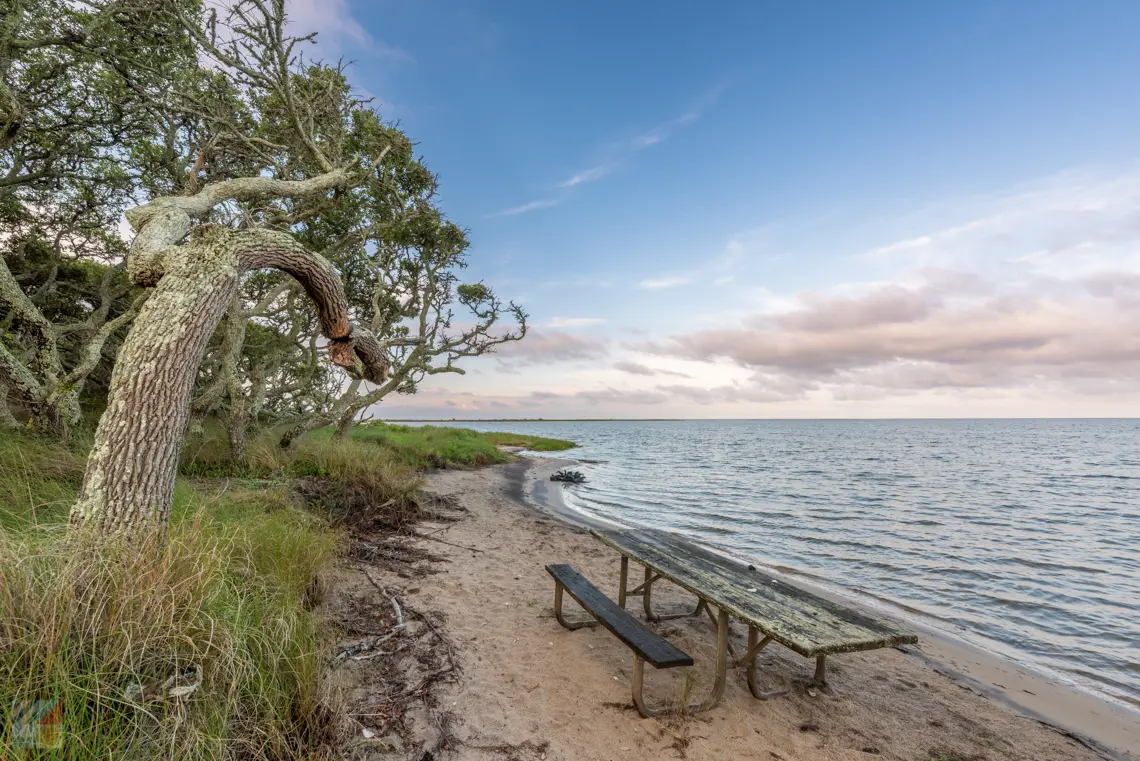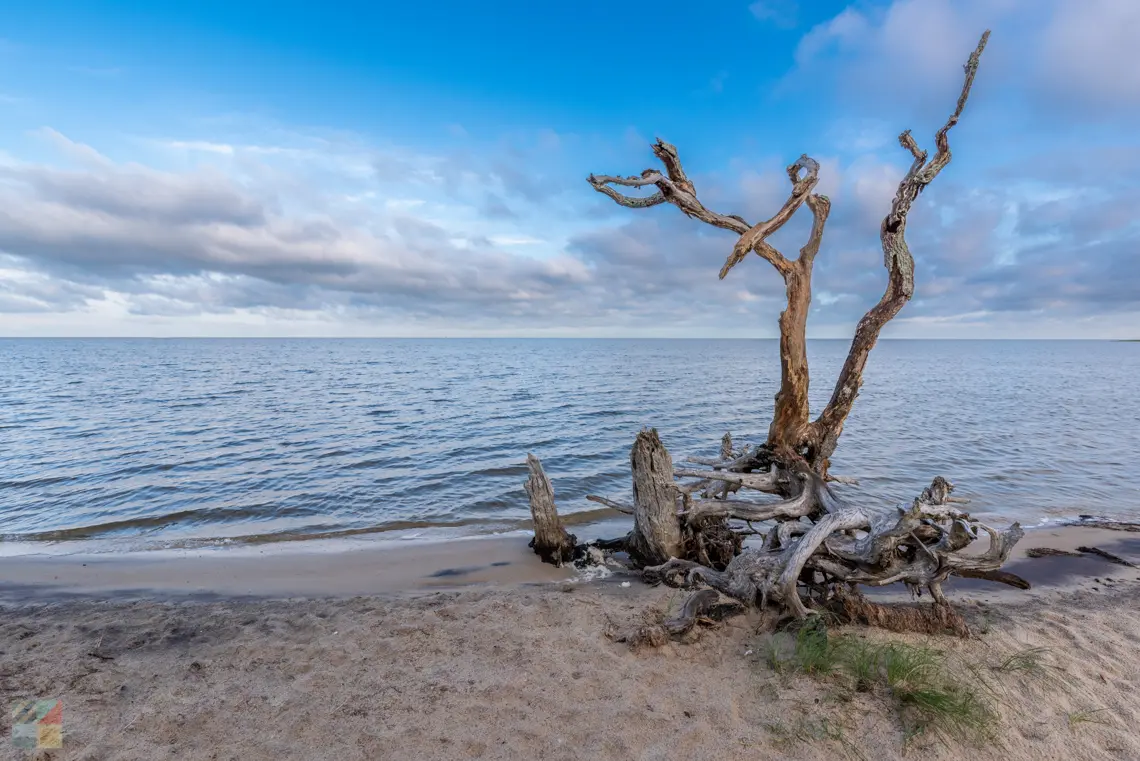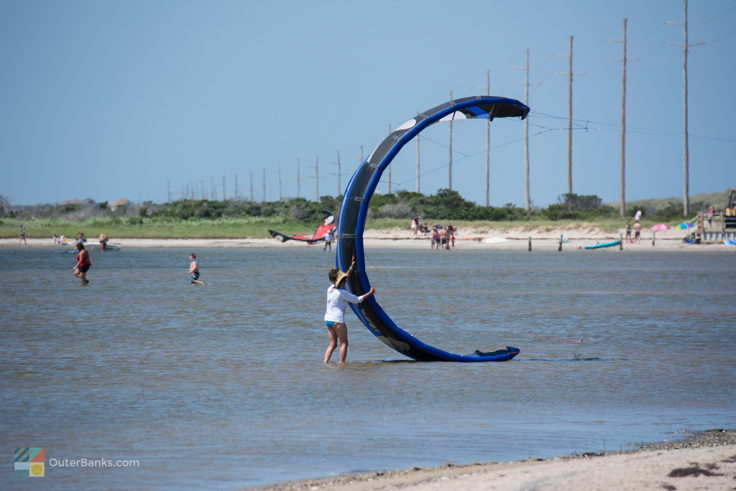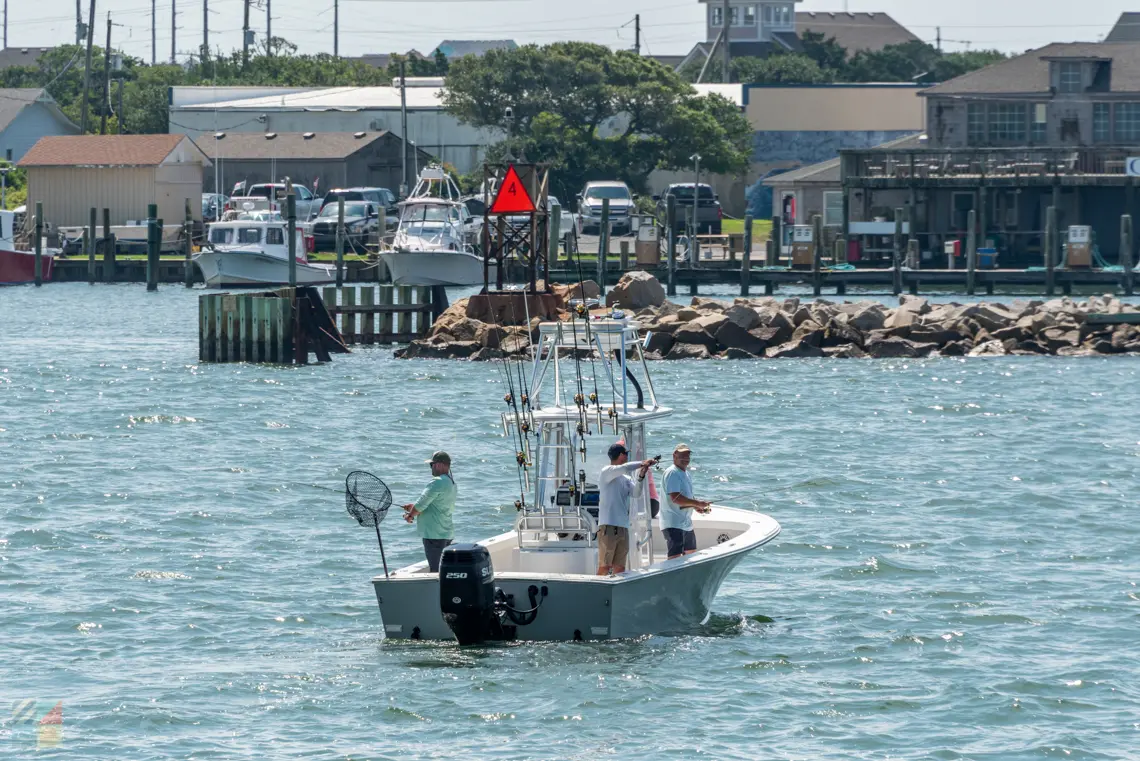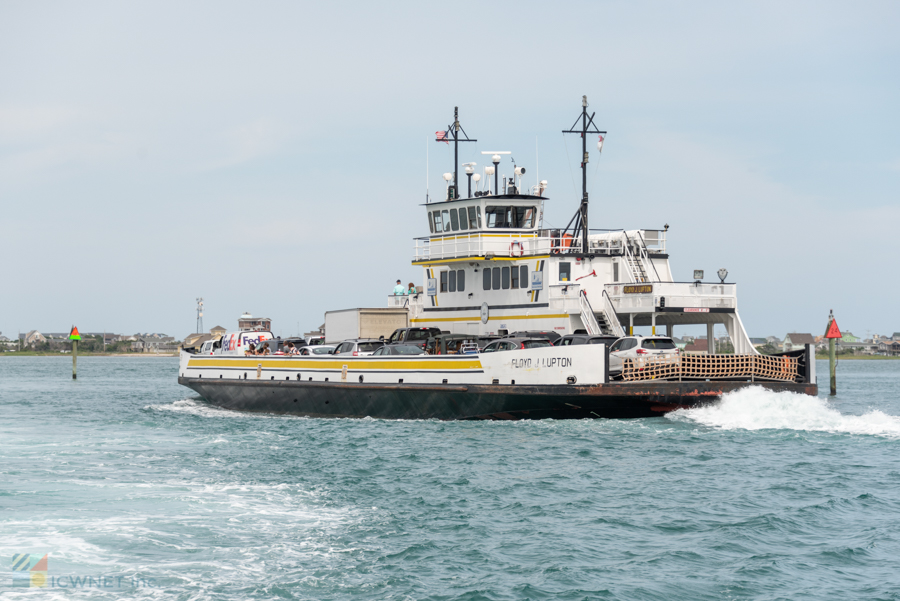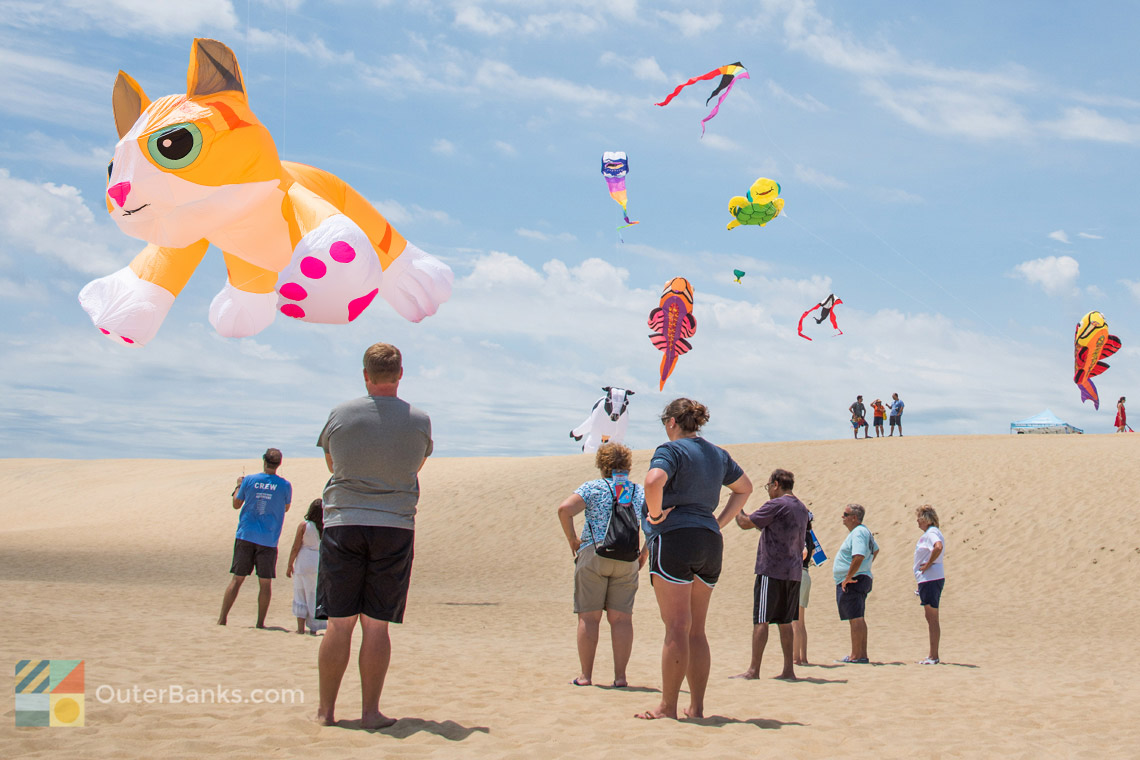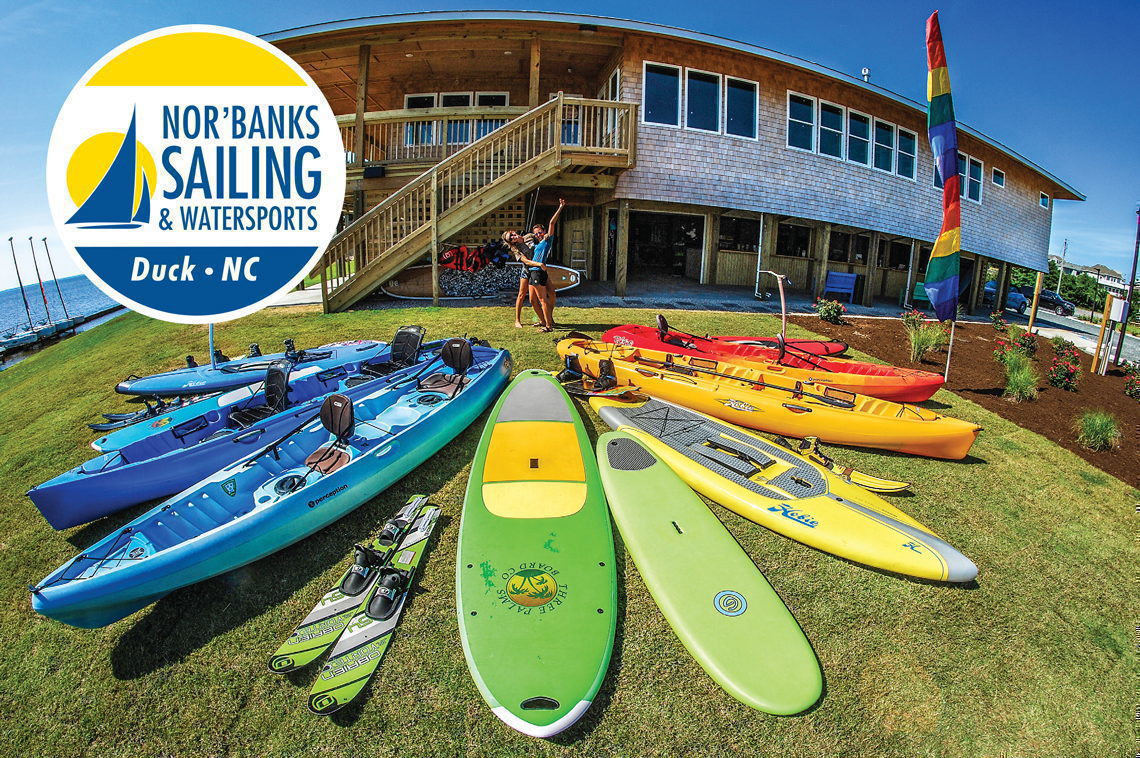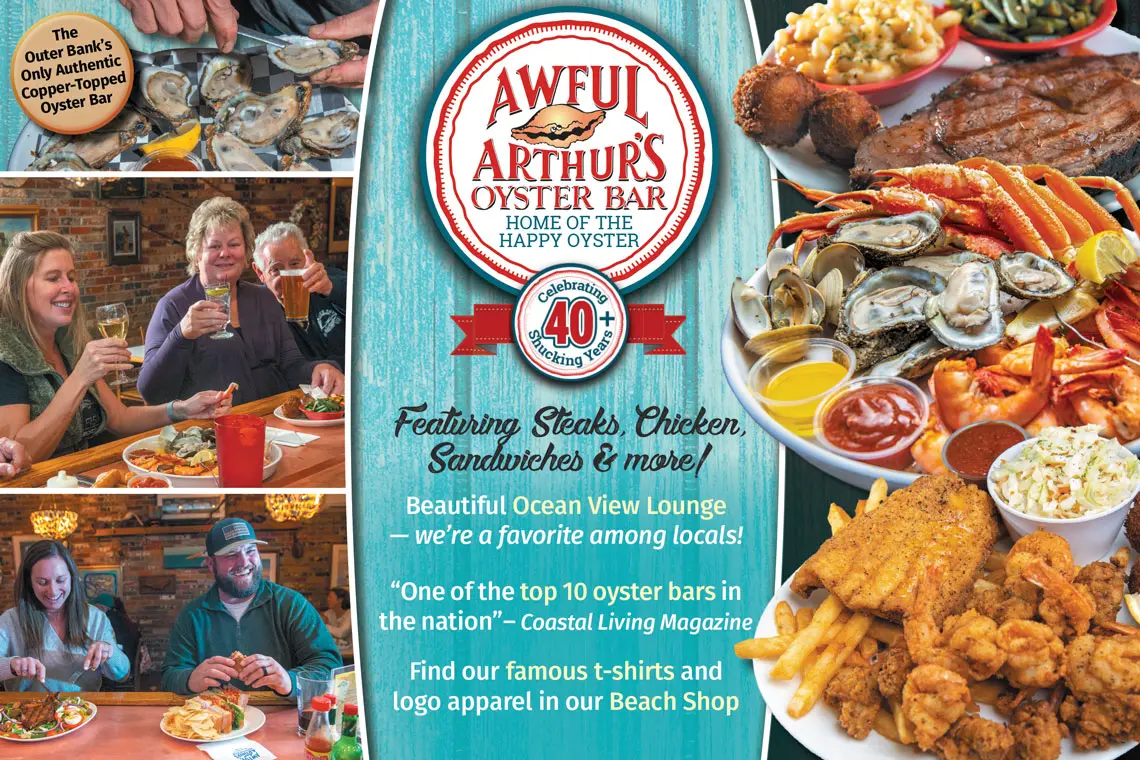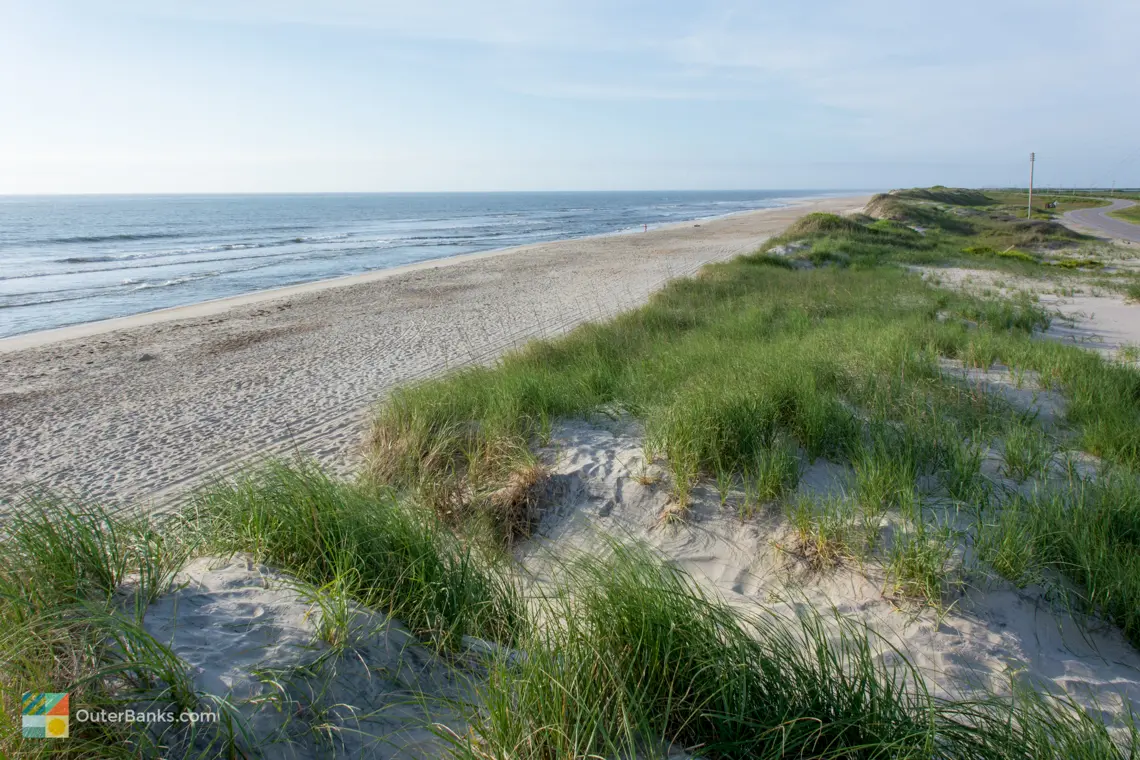The Pamlico Sound is literally one of the biggest attractions on the Outer Banks, second only to the miles of shoreline and cool blue waves of the Atlantic Ocean. Stretching from the borders of Manteo and the Dare County Mainland all the way to Portsmouth Island and the Cape Lookout National Seashore, virtually all southern Outer Banks visitors will catch a glimpse of the Pamlico Sound at some point during their OBX vacation.
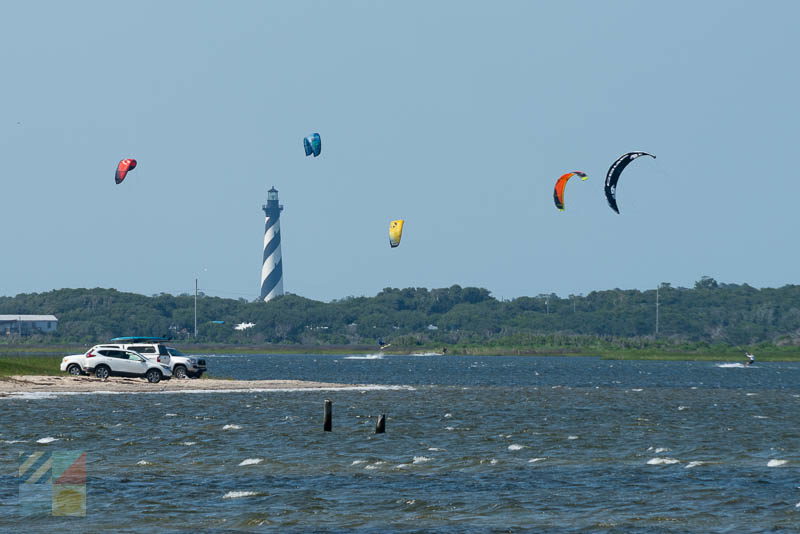
Of course, for most folks, a quick view of the Pamlico Sound while crossing the Marc Basnight Bridge, or while driving along NC Highway 12 isn't nearly enough, and in recent years the Pamlico Soundside beaches have become a popular attraction in their own right. Every year, hundreds if not thousands of watersports lovers flock to the soundside beaches for some of the best windsurfing and kiteboarding conditions in the country, and kayakers, paddle boarders and even parasailing enthusiasts have followed suit and have started to discover these gorgeous beaches.
Despite the Pamlico Sound's worldwide designation as the ultimate watersports playground, vacationers will still find plenty of quiet sound access points, secluded beaches, and million dollar unobstructed views along most every stretch of the southern Outer Banks shoreline. For a break from the beach, and an introduction to Bodie, Hatteras and Ocracoke Islands' other fantastic body of water, make sure a trip to the Pamlico Sound is on your vacation agenda.
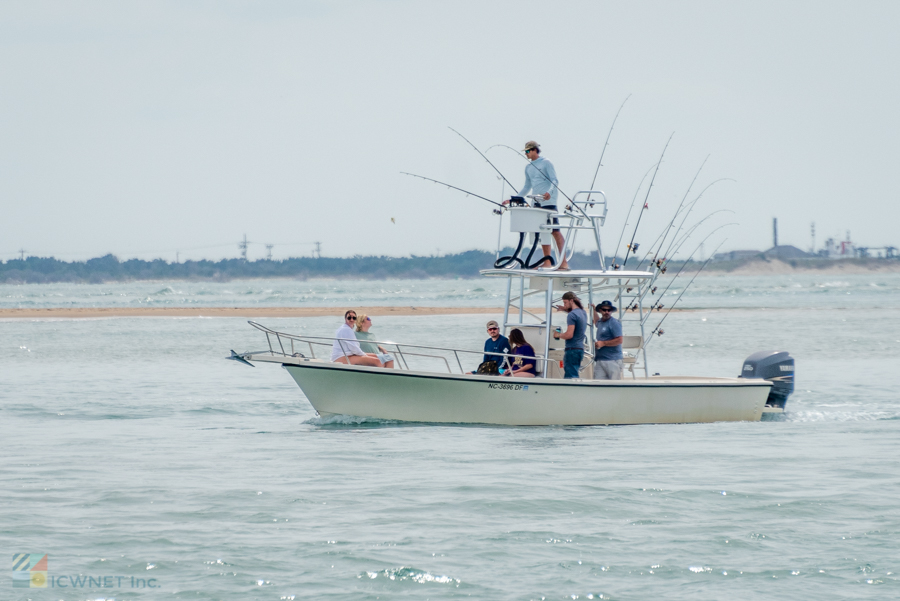
The Geography of the Pamlico Sound
The Pamlico Sound is the largest sound on the East Coast. A "sound" is a regional term for a saltwater lagoon, and at an approximate 80 miles long and a variable 15-20 miles wide, the Pamlico Sound comprises the majority of the western Outer Banks coastline from Whalehead Junction at the edge of Bodie Island all the way to Portsmouth Island.
It's no wonder that the original Spanish explorer Giovanni da Verrazzano originally mistook the body of water for the Pacific Ocean. Creating miles of open water in between the Outer Banks barrier islands and the mainland, the Pamlico Sound basically makes Hatteras and Ocracoke Islands solitary worlds all their own.
The sound is fed by three different inlets, Oregon Inlet, Hatteras Inlet and Ocracoke Inlet, which not only connects it to the Atlantic Ocean, but maintains the salinity levels as well as the water levels. But unlike the Atlantic Ocean, with depths which can reach 20', 30' or even 50' feet just a hundred yards off the beach, the Pamlico Sound remains relatively shallow throughout, with an average depth of about 5'-6' feet or so, even well offshore.
The shallow nature of the Pamlico Sound is a mixed blessing. It means that water lovers including kiteboarders, small boaters and windsurfers will have no trouble navigating the waters, as the shallow depths produce small waves and plenty of easy launching points. On the flip side, the shifting depths can be hazardous for larger ships, and make the waters particularly susceptible to wind and barometric pressure-driven tidal fluctuations. Case in point, during many hurricanes, Hatteras Islanders have witnessed the waters of the Pamlico Sound rush towards the west, leaving empty sandbars behind, and then returning a few hours later in a rush, spilling over onto the streets and yards of entire villages. (This phenomenon works both ways, and many mainland communities have also suffered severe flooding over the decades due to sudden soundside flooding.)
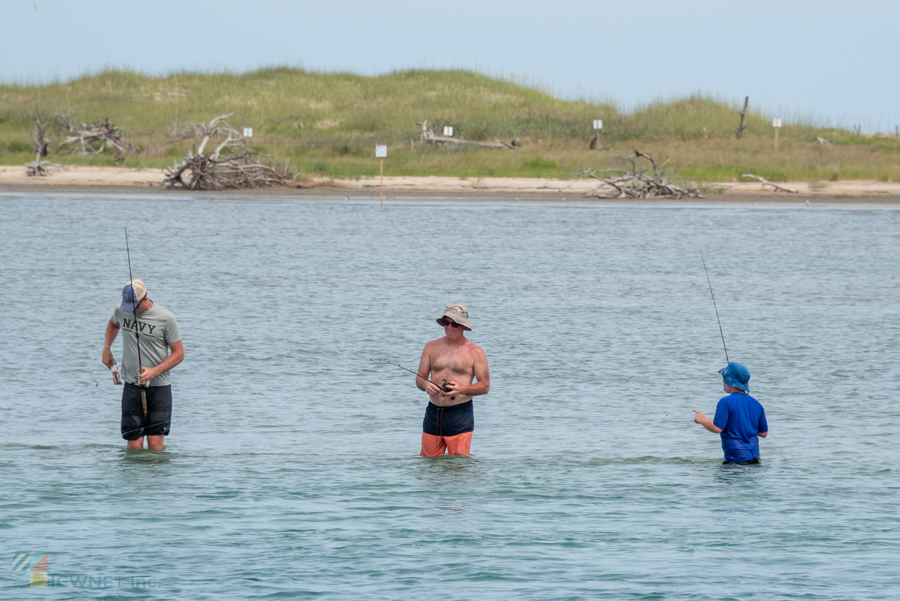
The rare occurrences of flooding and storms aside, the Pamlico Sound provides an important network of shipping lanes, recreational hot spots, and ecosystems for a variety of salt-dependent wildlife. The estuaries and rivers that trickle off the Pamlico Sound run deep into the mainland, providing towns like Bath, Columbia and Washington with gorgeous waterfronts, exceptional boating access, and acres of marshlands or soundside ecosystems for a variety of species to flourish.
As a result of the abundance of these unique eco-systems, a number of preserves and refuges have popped up along the Pamlico Soundfront, including the Pea Island National Wildlife Refuge and the Swanquarter National Wildlife Refuge located on the mainland. The sound beaches, saltwater marshes, and patches of maritime forests located off the sound's borders provide an ideal habitat for fish, reptiles, mammals, and hundreds of different migratory and full-time shorebirds.
Sound visitors should especially be on the lookout for great blue herons, white ibises and snowy egrets, the rare white pelicans, and even American Bald Eagles which make very rare appearances on the forest borders.
As for transportation, while a boat trip from the edge of mainland North Carolina to Hatteras or Ocracoke Island may be a long trek, folks still embark on the journey on skiffs or smaller vessels, and have done so for hundreds of years.
The Pamlico Sound, and particularly the portions bordering Hatteras and Ocracoke Inlets, was instrumental in settling the mainland communities of Eastern North Carolina in the 1600s and 1700s as it provided a channel for European ships coming across the pond to deliver goods and supplies to new colonists. Though finding an effective route was at times a trial and error process which required goods to be unloaded at the inlets and reloaded onto a smaller vessel, the sheer length of the sound allowed vessels to access countless small communities, creating a line of settlements and villages that was as long as the Outer Banks.

Another benefit of the Pamlico Sound to modern vacationers is the magnificent open water sunsets. As everyone knows from grade school, the sun sets in the west, and due to the sheer size of the sound, this means that visitors can enjoy a completely unobstructed waterfront sunset without any parcels of mainland in the distance to get in the way. This makes the Outer Banks one of the few vacation destinations on the East Coast where vacationers can enjoy both a sunrise and a sunset over the wide open water.
As for watersports lovers, the combination of miles of shallow terrain, small ankle-lapping waves, and a steady breeze, (fueled by both the proximity to the Atlantic Ocean and the Pamlico Sound), makes the Pamlico Sound a virtual Mecca. In the spring and fall months when wind conditions are at their best, hundreds if not thousands of windsurfers and kiteboarders will flock to the Pamlico Sound borders to test out their skills on America's largest open water playground.
Though sometimes tumultuous and occasionally overflowing onto both the mainland and the fragile villages along the islands, the Pamlico Sound is a geographical oddity that is simply incredible to behold in person, and a thrill to enjoy by boat, board, or even by lounge chair. Whether catching the sun on a full cycle from ocean to sound, or taking to the open water on a kiteboard, island vacationers relish the miles of waterfront room to roam, provided by the East Coast's largest saltwater lagoon.
Activities on the Pamlico Sound
As stated, one of the biggest Outer Banks activities on the Pamlico Sound is the bevy of watersports, which run the gauntlet from soundside fishing to parasailing. Kiteboarding and windsurfing are the two most popular waterfront activities, as the area is internationally known as one of the best sound-based board sport locales in the world. With literally miles of water to explore, and a collection of soundside canals that border entire neighborhoods and vacation rental home communities, water sports lovers will find ample access to one of the East Coast's largest bodies of water.
Of course, you don't have to be a board sports expert to enjoy the open waters, and many new vacationers to Hatteras or Ocracoke Island wills find plenty of things to love about the Pamlico Sound on their very first Outer Banks visit.
For one thing, the soundside beaches are fantastic for young families with small children. The shallow depths and lack of rough waves are perfect for wading, splashing, and enjoying the salty waters without the hazardous conditions. Close to the shoreline, the Pamlico Sound waters rarely become deeper than 2' - 3' feet, giving the littlest members of your family plenty of space to freely and safely explore.

The same conditions that are great for kids are also great for the furry members of your vacationing group. Water loving dogs adore the Pamlico Sound as it provides open access for a water-logged game of catch, sniffing, and splashing, with no waves to worry about. Just be sure and bring plenty of water along, as unless you are in a public parking area, there is usually no fresh water in sight by the Pamlico Sound.
Of course, Hatteras Island and Ocracoke Island are both known for their exceptional fishing via a number of different bodies of water, and the sound is no exception. Anglers exploring the waters by boat will find plenty of good fishing holes, (particularly near old crab net pilings or beacons), where they can real in mullets, spots, croakers, and especially sheapshead, which like to congregate near dilapidated structures in the water.
The Pamlico Sound is also known for its fantastic oyster beds, for both commercial and public use, and miles of clamming grounds. Via a kayak or small skiff, simply find a locale that has a sandy bottom, but is close to an area that is heavy with submerged sea grass. After your location has been scouted, it's simply a matter of hopping out of the boat and digging. If your hand or foot touches a solid, hard object 2"-6" inches under the Pamlico Sound's sandy floor, then chances are you've stumbled upon a live clam that's ready to cook.
Beachcombers and recreational historians will also enjoy a soundside trip, as the majority of early settlements from the original Native American villages to the 1600s and 1700s European colonists congregated by the soundside. A lucky soundside trip may unearth a number of finds, including small slivers of brick from the foundations of 1800s homes, well -worn pieces of medal or glass, and whole, intact medicine bottles dating back hundreds of years.
With this in mind, beachcombers of all varieties should definitely include a Pamlico Sound trip on their beach itinerary, as the sound waters can unearth some incredible shell treasures just as well as they unearth archeological finds. Shell lovers can expect to find mud-loving periwinkles, colorful scallops, clam shells, and white-washed whelks and other delicate but hardy shells that have been literally buried for hundreds if not thousands of years.
If you're heading to the Pamlico Sound for its superb beachcombing, be sure and scout along the shoreline in addition to the waters just off the beach. Many times, the best treasures can be found just barely in the water, half buried by layers of sand.
Of course, there's no rule that a soundside visit means you have to be actively scouting the water for treasures, fishing, clamming, or breezing across the surface on a boat or a board. Many vacationers head to the Pamlico Sound for its simple isolation, cool breezes, and miles of open water views. When it comes to the evening hours on the Outer Banks, the Pamlico Sound is the ideal locale to catch a sunset and simply enjoy the unobstructed waterfront vistas.
The sound is also an ideal destination on those extra breezy beach days where the oceanside is a little too rough, and the northeast winds are driving the beachside sand a little too hard. On these windy days, the sound is a perfect alternative, as the beaches are usually calmer, less breezy, and still enjoy the waterfront views and endless sunshine as the oceanside beaches.
Regardless of your reasons to visit, the Pamlico Sound is sure to provide every vacationing group with miles of entertainment, and plenty of fond memories to store away and take back home.
Where to Visit and Access the Pamlico Sound
Hatteras and Ocracoke Island vacationers will find there are plenty of public parking areas and off-the-beaten path locales to access and enjoy the Pamlico Sound beaches. In fact, the amount of sound access points are too innumerable to list, and new visitors, particularly those in search of a private soundside beach, are advised to pay close attention to the western side of NC Highway 12 for those small parking areas or soundside paths leading out to the Pamlico Sound waters.
That being said, some of the most popular locations for sound visitors, which also feature plenty of amenities, are in plain sight and can generally be found in between the stretches of highway and the villages that line the Outer Banks seashore.
The Salvo Day Use Area, located on the outskirts of Salvo Village, is well marked and features ample concrete parking, public restrooms, picnic areas, and a wide grassy soundfront area that is perfect for launching kiteboards, windsurfing boards, kayaks, and even stand-up paddle boards. Popular from spring until fall, the Salvo Day Use Area still remains consistently uncrowded with plenty of room for families and water sports lovers alike.
In the shoulder season months, Canadian Hole and Kite Point are arguably the most popular beaches on Hatteras Island. These adjacent soundside beaches are located in between Buxton and Avon, and feature incredible launching locales for kiteboarders and windsurfers, as well as background views of the Cape Hatteras Lighthouse. Canadian Hole is especially popular with families, as it has an expansive parking area, large public bathrooms, and seasonally open showers for cleaning off before heading back to your vacation home.
Just north of Hatteras Village, vacationers will find a more secluded soundside beach located in a small public parking area just across the highway from a small oceanfront walkway. This large area features rarely travelled sandy paths that lead all the way to the sound, bordered by both grassy and marshy areas. For a soundside trip that's secluded, it's hard to beat this little known public access area.
On Ocracoke Island, virtually every public parking area can lead to a Pamlico Sound expedition, although many vacationers attest the best beaches are bordering the inlets, either by the ferry docks at Hatteras Inlet, or at the very edge of the island's 4WD accessible Ocracoke Inlet. These locales not only offer easy access to oceanside beaches, but a wealth of sea critters, including live fuzzy sand dollars, blue crabs, and hermit crabs that scuttle along the shoreline.
There's also a short but sweet nature trail located on Ocracoke Island a few miles outside the village's limits, which introduces visitors to the Pamlico Sound via a long boardwalk that winds across a saltwater marsh. Perfect for birders, this small but scenic trail is seldom discovered, but easily enjoyed.
Springer's Point is another sound access point that is filled with local wildlife. This preserve located within the village limits features a nature trail which winds all the way from the maritime forest to the very edge of the Pamlico Sound. Here, visitors will enjoy quite the show as dozens of boats, ferries, kayaks, and kiteboarders glide by en route to the Ocracoke Harbor.
Many vacation rental companies on Hatteras Island also represent soundfront, or even canalfront homes, which refers to rental homes that are situated along the Pamlico Sound's border. Many of these homes feature private beaches, boat docks, large grassy yards for rigging and launching, and incredible sunsets every night of the week. If you want to get your feet wet in the Pamlico Sound scene, there's nothing like booking a soundfront vacation rental homes or condo to enjoy proximity to the waterfront 24/7.
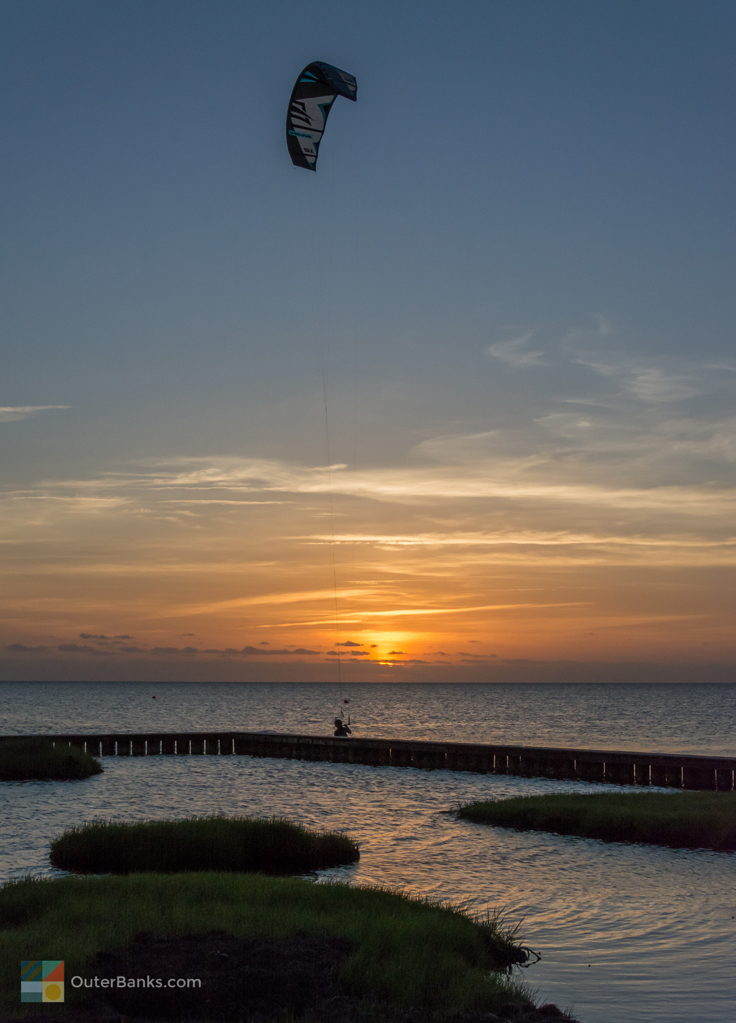
Tips and Tricks for Visiting the Pamlico Sound
- Don't be afraid to cover new ground. Some of the best Pamlico Sound beaches are those that are less traveled, and visitors will find plenty of public access points, particularly in between the villages of Avon and Salvo. For history buffs, be on the lookout for the Old Little Kinnakeet Station, located just a couple miles north of Avon Village. At this access point, visitors will pass by the historic lifesaving station, still a work in progress and undergoing National Park Service sponsored repairs, before being deposited out onto a seldom discovered soundside beach. Stroll about a quarter mile north, and you'll discover ancient bricks and pieces of glass which are remnants from the original Little Kinnakeet village, a small community that disappeared centuries ago after the lifesaving station was shut down. History buffs and beachcombers alike will find this trip a thrill, and an up-close look at Avon's rich history.
- Be on the lookout for other critters sharing your space, particularly mosquitos, (which can easily be warded off with a little bug spray), and reptiles. The majority of reptiles you'll encounter along the Pamlico Sound are harmless for the most part, although visitors should be on the lookout for water moccasins, which are poisonous and can lurk along rocky or particularly grassy areas. Though snake bites are extremely rare, vacationers are nonetheless urged to use caution and simply be observant when visiting the soundside beaches.
- For a complete bug and reptile-free vacation, consider visiting the southern Outer Banks in the off season. The spring, winter and fall months are an ideal time to explore the soundside beaches, and the islands still feature a healthy handful of grocery stores, restaurants and attractions that are wide open to visitors.
- Speaking of the shoulder and off-seasons, the spring and fall months are the ideal time to visit the Pamlico Sound for watersports lovers. Not only are the conditions completely perfect for kiteboarding and windsurfing, but a number of both national and local tournaments or festivals are held locally, devoted to these two watersports. In addition, newcomers will find that board sport lovers from around the world flock to the area during these times, allowing them ample opportunities to hang out and get to know their Pamlico Sound loving colleagues.
- If nothing else, if you are vacationing on Hatteras or Ocracoke Island, be sure you head to the Pamlico Sound at least once for a waterfront sunset. With nothing but open water, the entire horizon lights up in hues of orange, pink and purple, and presents a fantastic nightly show that is not to be missed. Summer visitors should also keep an eye out for the small baiting mullet, which make nightly leaps out of the water in the dozens if not the hundreds, and add one extra element of pure entertainment to a Pamlico Soundfront sunset.
- Love the ocean and don't necessarily want to stray too far? When looking at accommodations, stick to the outskirts of Rodanthe, Avon, Frisco and Hatteras villages. A number of vacation rental homes on the very edges of these villages offer panoramic views of both the ocean and sound, allowing guests to start their day with an ocean sunrise, and end it with a Pamlico Sound sunset.
Regardless of whether you're simply passing through via the Basnight Bridge or NC Highway 12, or in it for the long haul with a full vacation filled with the East Coast's best kiteboarding or windsurfing, the Pamlico Sound is a huge attraction that simply cannot be missed.
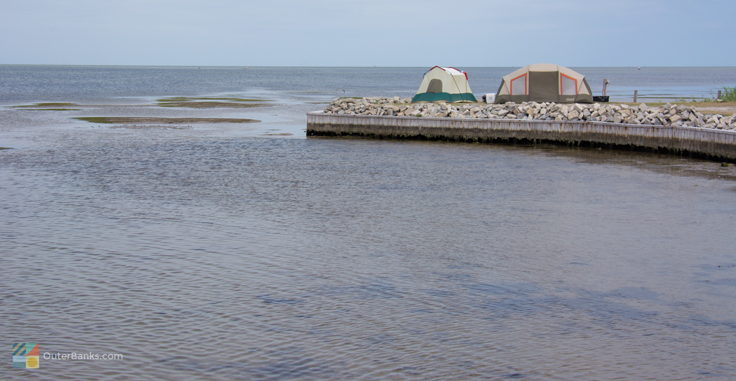
With miles of open water to explore, and unique ecosystems popping up along both Hatteras and Ocracoke Island as well as the North Carolina mainland, the Pamlico Sound is a singularly astounding attraction that has newcomers and longtime vacationers hooked.
On your next southern Outer Banks vacation, be sure and make a Pamlico Sound visit an essential part of your vacation itinerary. With miles of open water, sandy beaches ideal for young families, and the best unobstructed waterfront sunsets on the Eastern Seaboard, the Pamlico Sound is one local attraction that everyone can enjoy with effortless ease.
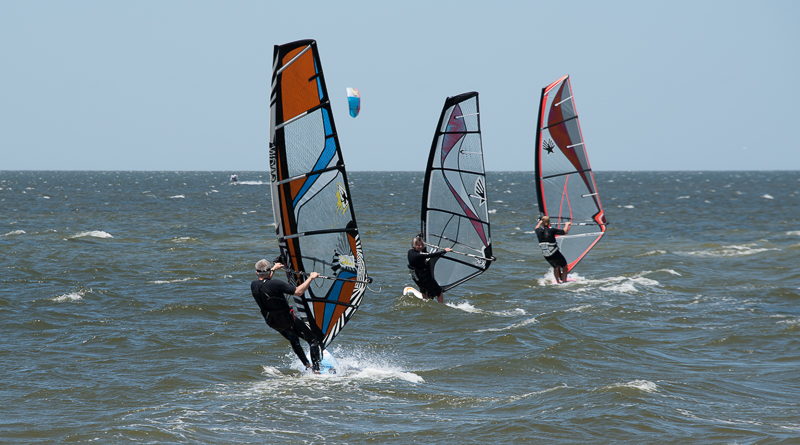

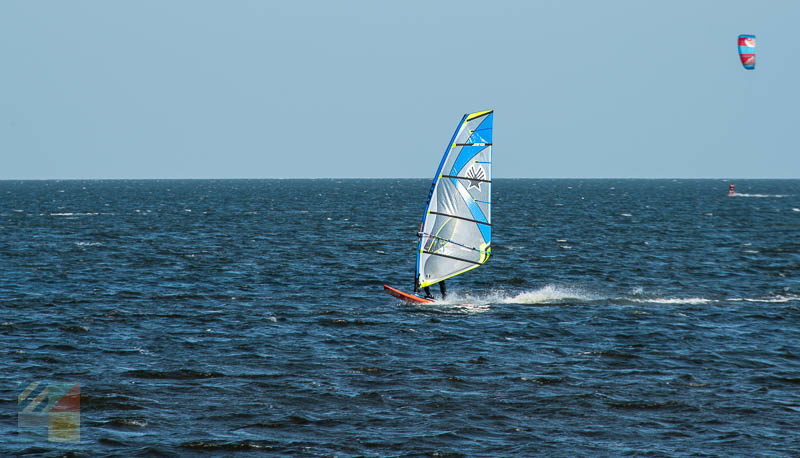
-
OBX Wedding Fest
January 16th, 2026 - January 18th, 2026 -
Hatteras Island Oyster Roast
February 7th, 2026 1:00 PM - 4:00 PM -
First Friday in Manteo
March 6th, 2026 6:00 PM - 8:00 PM
PokeBox offers fresh, quick, simple, healthy poke bowls in Nags Head. Choose your items and build your bowl. Tuna, salmon, chicken, steak, shrimp and tofu options available. Mix in your favorite veggies, sauces and toppings for the perfect poke...
For bird lovers, the Outer Banks is hard to beat. This delicate chain of barrier islands is not only home to dozens of different native shorebirds, but also thousands of migrating birds who make a rest stop on the Outer Banks every year. Add to this...
Nor'Banks Sailing & Watersports beautiful location and top-of-the-line equipment, together with a friendly and professional staff make it one of the premier water sports centers on the Outer Banks. Nor'Banks' sound front location has a huge...
Here is a list of some of our favorite beach toys for kiddos. We gravitate to unique, high-quality toys that inspire creativity. Some of these toys are classics, and some add a twist.
KEES Vacations offers the best Outer Banks rentals for family vacations, romantic weekend getaways and groups of all sizes looking for the perfect OBX rental for their stay. When booking with KEES Vacations, travelers can expect excellence in...
Once you have your coastal recreational fishing license in hand, it’s time to start thinking about gear. Anglers will find tons of options when it comes to equipment for casting into the surf, from custom designed rods and reels at local...
Welcome to the home of the happy oyster where for over 40 years the oyster has been our world. The Outer Banks only authentic oyster bar is the place to enjoy sensational fare from the sea washed down with your favorite brew or cocktail. We serve by...
Decades ago, one of the only ways to access some of the most secluded areas of the Outer Banks was via a ferry, and this tradition carries on today for thousands if not millions of visitors who want to travel to some of coastal North Carolina's most...
Off the beach, one of the best activities for groups to enjoy in the Outer Banks is mini golf, bumper cars or Go-Karts. Thankfully, Paradise Fun Park offers all three activities! Paradise Fun Park offers exciting outdoor activities that kids and...
Explore Hatteras Island at its natural best with a visit to the Pea Island National Wildlife Refuge. Covering 13 miles of Cape Hatteras National Seashore land, this attraction is hard to miss, although there aren't many giant signs, hotels or...
Sundogs is a happening spot open year round in Corolla. Along with good food, they feature a nightlife that includes live music, karaoke and a DJ dance party. They have a full bar and a menu suited to a host of tastes. Starters include nachos, crab...
Many newcomers to the Outer Banks who are browsing the local restaurants, shops and area attractions online or in the local guide books notice an interesting addition to the standard address. Besides the typical business name, street name, street...
You haven’t experienced North Carolina until you’ve experienced North Carolina BBQ, and Pigman’s Bar-B-Que offers excellent North Carolina BBQ meals served with southern hospitality. Pigman’s offers traditional eastern...
In the past few years, the Outer Banks has become a popular destination for large families and groups who are planning a beach wedding, a corporate retreat, or just a casual family reunion. This turn of recent events is due in no small part to the...

